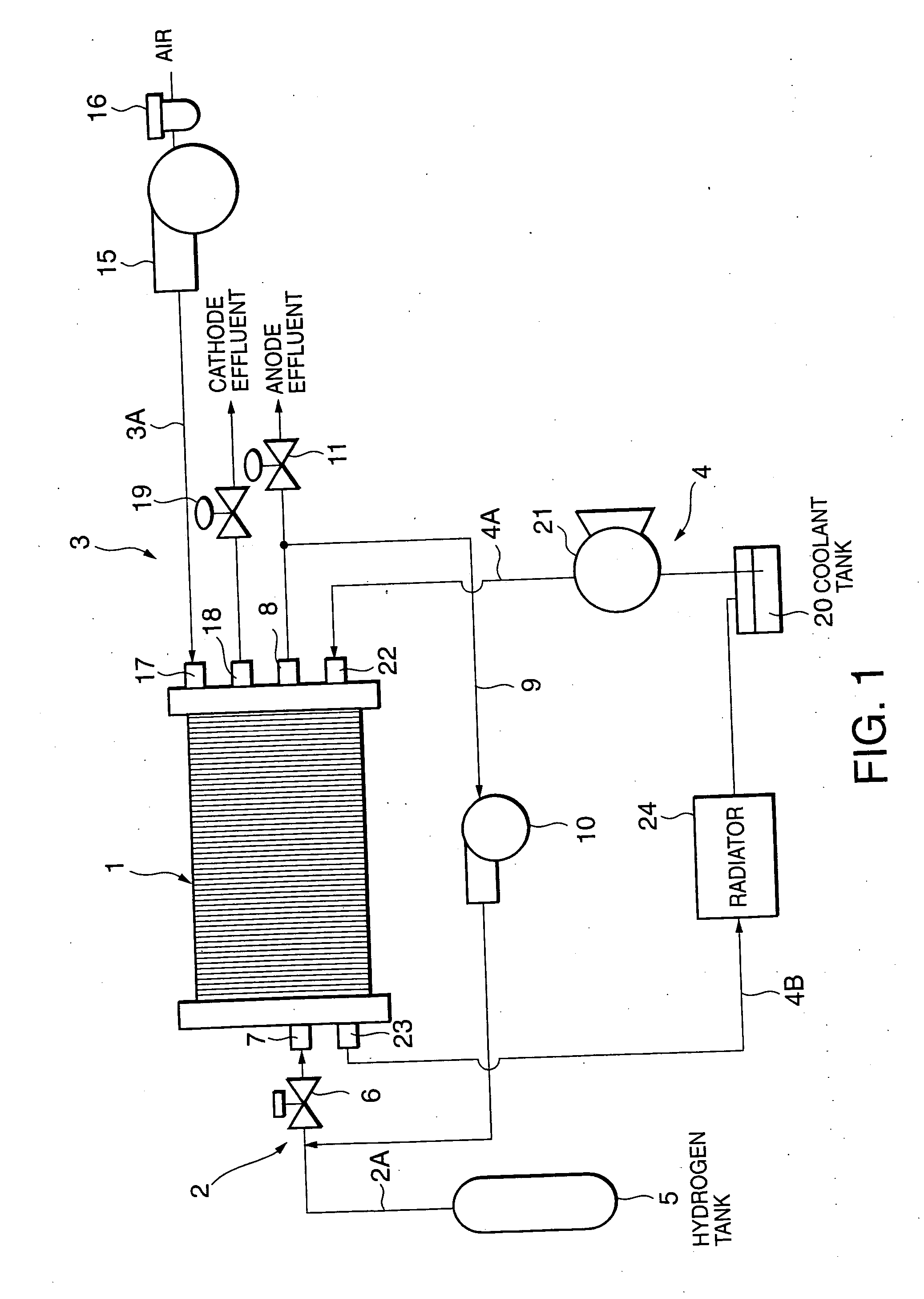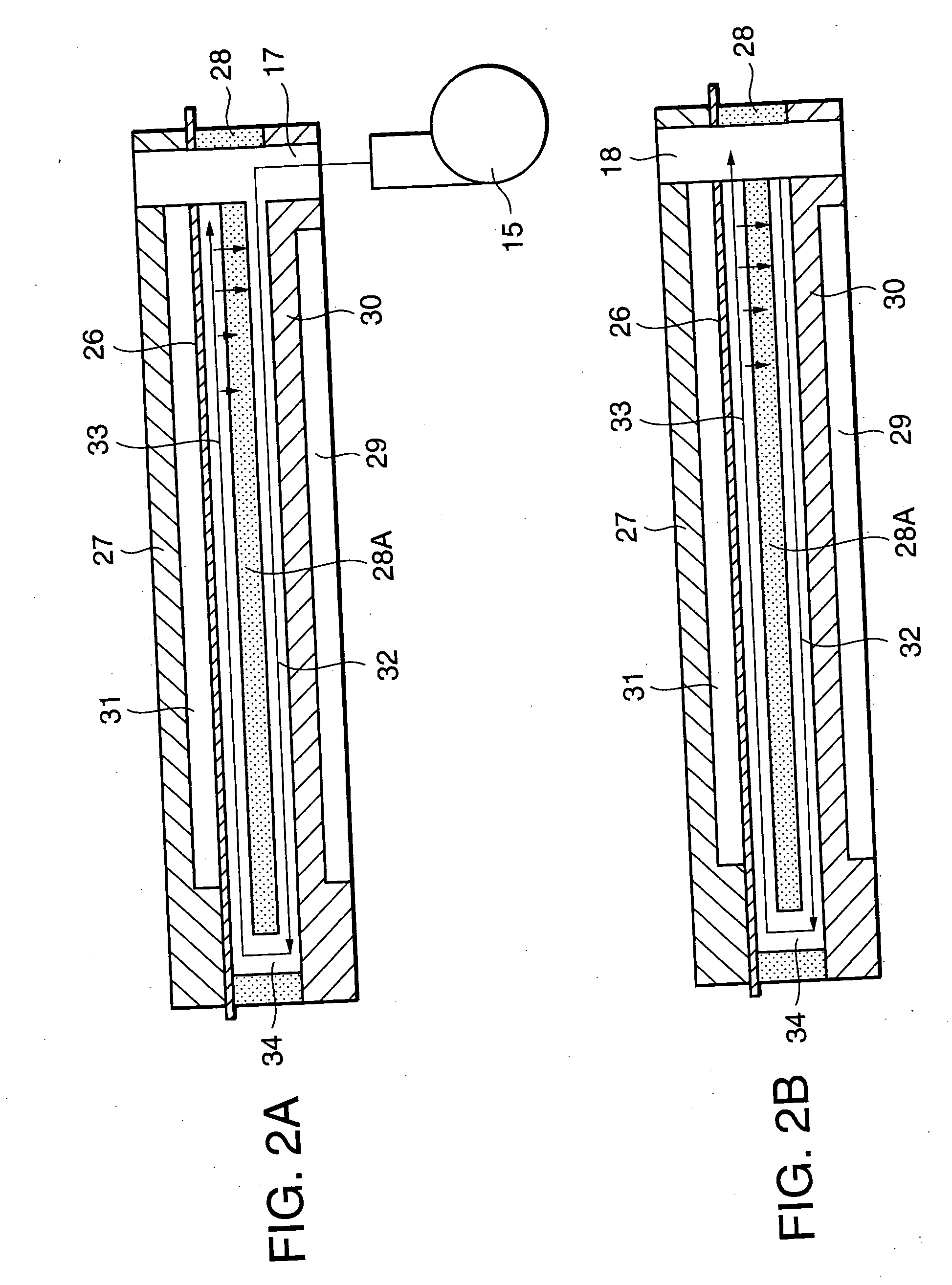Polymer electrolyte fuel cell and power generation device
a fuel cell and polymer electrolyte technology, applied in the field of moisture distribution within a polymer electrolyte fuel cell, can solve the problems of inability to completely prevent undesirable phenomena in power generation function, inability to transfer insufficient amount of moisture from the moist portion to the dry portion, and difficulty in completely preventing undesirable phenomena in the power generation function. to achieve the effect of improving the transporting performance of moistur
- Summary
- Abstract
- Description
- Claims
- Application Information
AI Technical Summary
Benefits of technology
Problems solved by technology
Method used
Image
Examples
second embodiment
[0077] Referring to FIGS. 10 to 14, this invention will be described.
first embodiment
[0078] The power generation device shown in FIG. 10 differs from that of the first embodiment in the structure of the cathode gas supply unit 3. The upstream cathode gas channel 32 of each fuel cell is connected to an external pipe 39A that leads to a blower 38 outside of the fuel cell stack 1 through a second outlet manifold 36. The blower 38 takes in the cathode gas of the external pipe 39A and forcibly sends out the cathode gas to an external pipe 39B. The cathode gas that is sent out to the external pipe 39B is redistributed to the downstream cathode gas channel 33 of each of the fuel cells through a second inlet manifold 37 that is formed in the fuel cell stack 1.
[0079] Referring to FIG. 11, the second outlet manifold 36 that communicates with the upstream cathode gas channel 32, and the second inlet manifold 37 that communicates with the downstream cathode gas channel 33 are formed in the porous BPP 28 as substitutes for the through hole 34. As shown in FIG. 12, the second out...
third embodiment
[0086] Referring to FIG. 15, this invention will be described.
[0087] In this embodiment, the cross sectional area of the outlet manifold 18 is set larger than the cross sectional area of the inlet manifold 17, and the cross sectional area of the second inlet manifold 37 is set larger than the cross sectional area of the second outlet manifold 36. Other structures are identical to those of the second embodiment.
[0088] The MEA 26 faces only the downstream cathode gas channel 33 of the porous BPP 28, and does not face the upstream cathode gas channel 32. Therefore, it is necessary to make the flow of the cathode gas uniform in the downstream cathode gas channel 33, but it is not necessary to do so in the upstream cathode gas channel 32.
[0089] The widths of the cross section of the outlet manifold 18, which serves as an outlet of the downstream cathode gas channel 33, and the cross section of the second inlet manifold 37, which serves as an inlet of the downstream cathode gas channel ...
PUM
 Login to View More
Login to View More Abstract
Description
Claims
Application Information
 Login to View More
Login to View More - R&D
- Intellectual Property
- Life Sciences
- Materials
- Tech Scout
- Unparalleled Data Quality
- Higher Quality Content
- 60% Fewer Hallucinations
Browse by: Latest US Patents, China's latest patents, Technical Efficacy Thesaurus, Application Domain, Technology Topic, Popular Technical Reports.
© 2025 PatSnap. All rights reserved.Legal|Privacy policy|Modern Slavery Act Transparency Statement|Sitemap|About US| Contact US: help@patsnap.com



